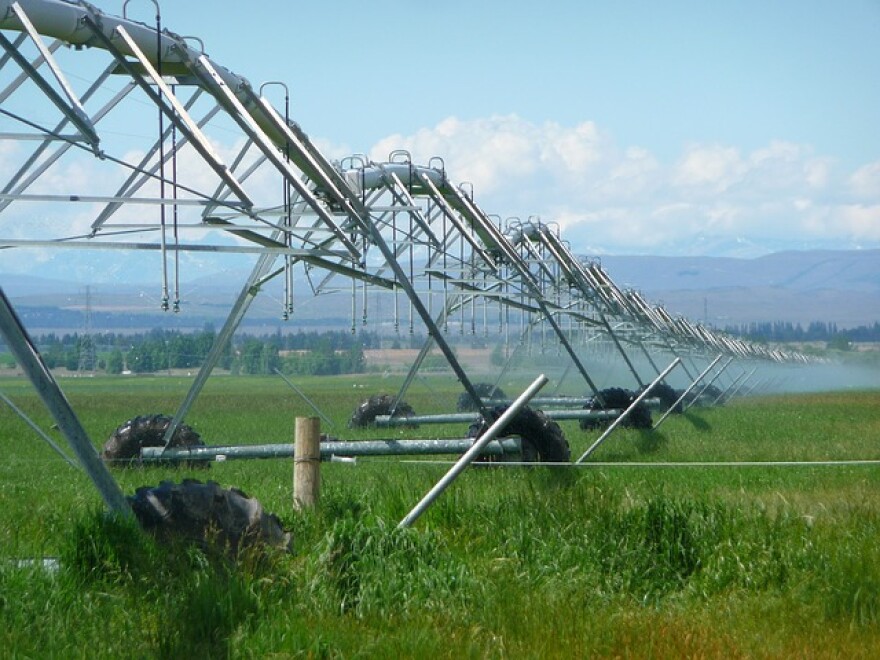One of the issues that you will hear a lot about in the coming months is the proposed water-rights compact between the State of Montana and the Confederated Salish and Kootenai Tribes. It’s the only water compact involving a Montana reservation that remains un-ratified by the state legislature, after the first version was rejected in 2013.
Deputy Attorney General Cory Swanson was involved in the latest round of talks that led to a new compact, and he thinks this latest version will pass muster with irrigators who were concerned the previous version would leave them without the water they need.
“No agreement is perfect," says Swanson, "however the feeling coming out of this final negotiation was that it met those objectives. It’s constitutional, and it provides answers to a lot of the concerns that the critics had.”
Swanson says several things about the new agreement make it a good deal for irrigators and the tribe. The compact has to satisfy farmers’ and ranchers’ need for water, as well as the tribes’ need to access their traditional fishing grounds. To make sure everybody has enough water, the tribes and the state agreed to an “adaptive management process” that begins with ten years of study.
According to Swanson, part of that process is “to actually go out and measure the amount of water that’s being used on all these different irrigation points, and farms and ranches on the project. The reason that’s necessary is there haven’t really been effective measurements or comprehensive measurements of all that irrigation use for all these years.”
By 2025, this measurement should produce a record of how much water each grower needs. The next step in “adaptive management” is making sure the canals that serve growers are literally watertight.
“Over time, water will be efficiently used, leaky canals are fixed, leaky head gates are fixed, as more efficient and effective ways to move to sprinklers in certain areas, are implemented, less water will go to irrigation in terms of the diversion, but the same amount of water will be used on farms because the efficiency will eliminate the waste," Swanson says.
The water saved by all this improved efficiency will count toward the stream flows for the tribe’s fisheries. This “adaptive management” effort will be overseen by a five-member technical team. In a key ‘win’ for agriculture, Swanson says all sides agreed that one of the places on the team will be reserved for an irrigator.
Even with improved efficiency, there’s a risk that a dry year will leave farmers and ranchers without enough water. So the new compact also has a backup plan: a pumping fund to supply water from alternative sources including reservoirs, when needed.
“That system of additional sources of water and the funding to provide for the pumping, is a very effective backup plan to ensure that year in and year out the irrigators will get the amount of water that they historically have used for irrigation.”
Growers also needed a guarantee that their water could not be shut off, that they would not be told, in effect, you don’t have a water right. Swanson says farmers will get a ‘federal delivery guarantee’, a piece of paper that says you have a right to the delivery of water that is pertinent to your land.
Swanson adds, “that’s important in the irrigation world. Pertinent to the land means if I sell the farm, that the delivery guarantee goes with the farm to whoever buys it, or say I bequeath it to my heirs, and it passes to the next generation. It also limits the use of that water to irrigation so it can’t be diverted by the federal government or somebody else to a different use.”
The new compact also guarantees growers a supply of low-cost electricity to run their irrigation pumps. The tribes will sell the electricity at favorable rates from the Kerr hydroelectric dam, which the tribes will own in full as of September 15.
“We think that’s very important, so that we can continue not only to have the water but to have the affordable electricity to pump the water to the farms.”
The final major concern about the last compact centered on the Unitary Management Board, which governs water rights on the Flathead Reservation. To ease concerns that the board would only serve tribal interests, the new compact says board members will be nominated by county commissioners, and approved by the governor.
Swanson says anybody with concerns about the water compact should go right to the source, instead of believing everything they hear second hand.
“Just go on the DNRC web site, read the actual document, and then a lot of the things that people say about the agreement that are incorrect, all you have to do is go the specific text of the agreement, it’s really not that complicated.”
The DNRC website has the 2013 compact posted here. We reported earlier that the new proposed compact had already been posted on-line. A spokesman for the DNRC says it is still being drafted, and should be posted by the end of this week. We regret the error.


